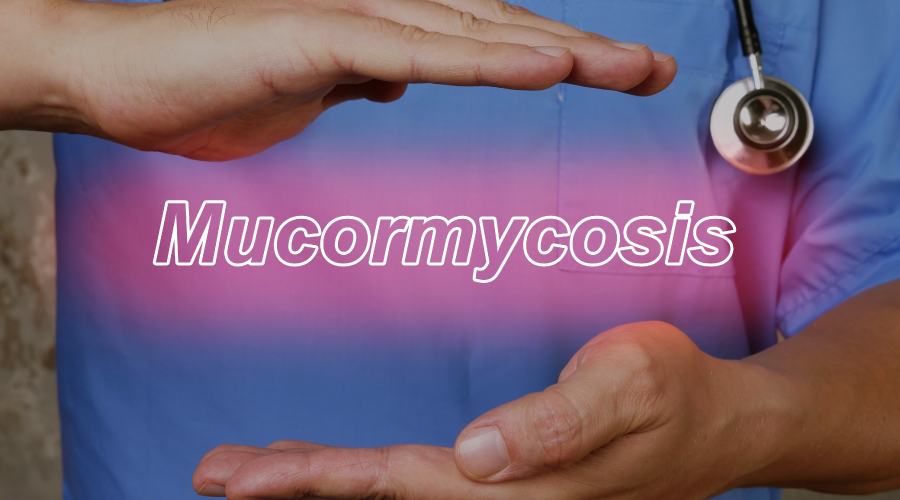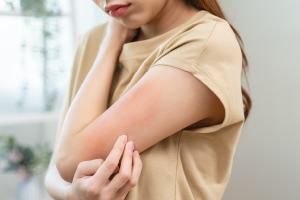

Mucormycosis, also called “black fungus infection,” is a rare but dangerous fungal disease caused by a group of moulds known as mucormycetes. It mainly affects people whose immune system isn’t working well, and it’s been a big problem lately, especially since COVID-19.
This article talks about this condition in-depth, like symptoms of mucormycosis, how it affects people, and how it can be treated at home or in a hospital.
What is Mucormycosis?
Mucormycosis is a dangerous/serious fungal infection that spreads quickly through the body, mainly to the sinuses, lungs, skin, and brain. Fungal spores normally present in soil/ earth, dead organic matter, and even the air are to blame for this disease. Despite being rare, the mucormycosis black fungus symptoms can be severe and, if untreated, may lead to life-threatening complications. The rise in mucormycosis cases in India has shown how important it is to quickly find and treat the disease.
Symptoms of Mucormycosis
The diseased portion of the body determines the symptoms of mucormycosis. Nonetheless, some common symptoms may include:
- Facial Swelling and Pain: Patients often experience severe pain and swelling around the nose, eyes, and cheeks. The areas that are hurt may turn red and swell, which is painful.
- Skin Turns Black: One of the most apparent signs of mucormycosis black fungus is skin turning black, especially around the eyes and nose. This is because the fungal invasion causes tissue death.
- Pain and Congestion in the Nose and Sinuses: Mucormycosis usually starts in the sinuses, blocks the nose for a long time, causes pain, and sometimes causes discharge that smells bad.
- Vision Loss or Blurred Vision: If the infection gets into the eyes, it can cause vision loss, swelling, or even blindness in the worst cases.
- Brain Involvement (Infection) and Severe Headaches: If the infection gets to the brain, it can lead to severe headaches, confusion, seizures, and changes in mental status.
- Fever and Fatigue: Fever and feeling tired are common signs of an infection. Together, they can show that the black fungus mucormycosis symptoms are spreading in the body.
- Breathing Problems: People with lung problems may have shortness of breath, chest pain, and coughing that won’t go away.
- Gastrointestinal Symptoms: Mucormycosis can sometimes affect the digestive tract, causing sickness, vomiting, and abdominal pain.
Cases of Mucormycosis in India
India has experienced an increase in mucormycosis cases recently, particularly among COVID-19 survivors. Those with weak immune systems are more prone to become ill since they either stay in the hospital for too long or receive too many/high doses of steroids. The number of infections is also going up because of the weak immunity from conditions such as uncontrolled diabetes, cancer treatments, and organ transplants. Because of the scary rise in cases, health officials are spreading information about mucormycosis, black fungus infections and how to avoid it.
Is Mucormycosis Contagious?
The question “Is mucormycosis contagious?” frequently comes up, especially among those concerned about fungal infections. It’s not true. People do not get mucormycosis from each other. People get it when they breathe in fungal spores from the air or when spores get into their bodies through wounds. This means that early diagnosis and personal safety measures are essential for people who are at high risk.
Different Ways to Treat Mucormycosis
If you have mucormycosis, getting help right away is very important. Treatment includes antifungal drugs, surgery to remove infected tissues, and supportive care. Let’s have a closer look at each one of them here:
- Antifungal Therapy: Amphotericin B is the antifungal drug most often prescribed to treat mucormycosis. Posaconazole or isavuconazole are two other antifungal drugs that may also be used to treat this condition.
- Surgical Intervention: If the infection is very bad, surgery may be needed to remove dead tissue and stop it from spreading.
- Diabetes Management: Controlling blood sugar levels is very important for people with diabetes because it is a significant risk factor for mucormycosis.
- At Home Mucormycosis Treatment: In mild cases, mucormycosis treatment at home may be managed with oral antifungals, good hygiene practices, and regular monitoring by healthcare experts.
Prevention and Awareness
To avoid getting a mucormycosis black fungus infection, you should practice good hygiene, avoid dust and mold, and wear masks in dusty places like construction sites. For immunocompromised individuals, regular health check-ups and diabetes management are essential.
Conclusion
To find and treat mucormycosis quickly, it is essential to know what symptoms of mucormycosis are. Knowing about the symptoms, treatment choices, and ways to avoid getting it can help lessen its effects. Even though it’s not contagious, you need to see a doctor immediately to stop it from worsening. The best thing to do when considering how to treat mucormycosis, whether at home or in a hospital, is to talk to a doctor or nurse. Additionally, knowing the mucormycosis treatment cost in India can help patients plan their medical expenses better. By staying informed and taking action, we can help lower the risks of this severe infection.




